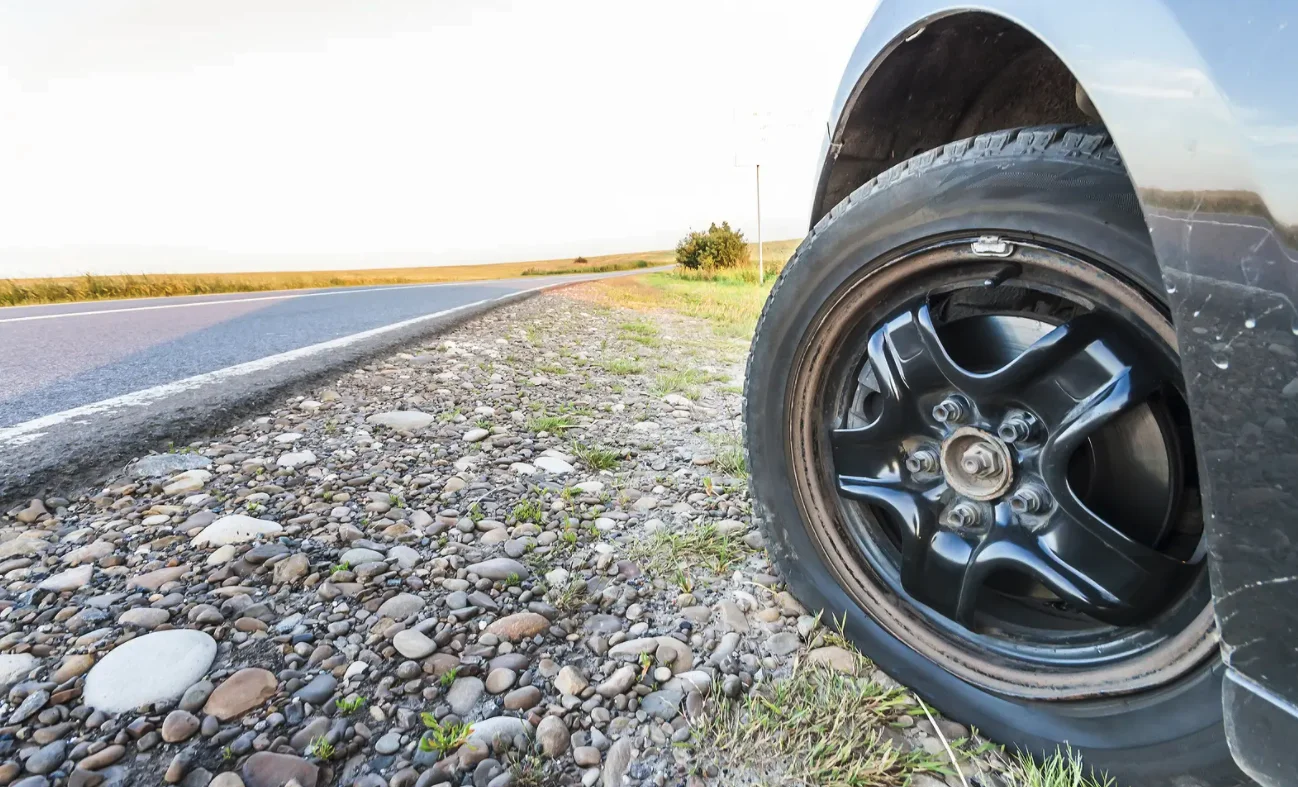
While driving through the highway, you might have probably come across rubbery remnants from a burst tire or experienced a loud boom that impedes steering control while cruising on the highway. Most tire blowouts occur due to excessive strain on the internal tire structure.
What is a tire blowout?
A tire blowout is a frightening occurrence that is potentially dangerous at any speed. The massive explosion during a blowout is followed by a whooshing sound as air quickly escapes from the tire.
Deflated tires tend to slow you down and cause the vehicle to pull towards one side. Blowouts may be the reason for loss of control and, in some instances, inflict rollover leading to serious, life-threatening crashes.
Causes of Tire Blowouts
Underinflation
Most tire bursts occur due to underinflation. Driving on tires with insufficient air pressure causes the tires to sag. Continuous sagging reduces the overall load-bearing capacity of the tire, contributing to gradual tire overheat. Excess heat causes the rubber bonds on reinforcing layers to weaken and eventually disintegrate and burst off.
It is advisable to keep tire pressure at recommended levels as prescribed by the manufacturer.
Overheating
Excess heat distorts the structural integrity and bonding characteristics of the tire’s internal structures. The heat generated due to friction between the tire and the road surface breaks the bond between the metallic belts and the rubber components of the car tire. Tire blowouts will be prevalent over the summer period.
Damage from impact
Hitting potholes, foreign objects or bumps at high speed are known to cause tire bubbles, which may form on the sidewalls or along the tire treads. Impact forces contribute to piling up of shearing pressure on the tire structure. Tire blowouts due to air bubbles may not occur instantly on collision since tire pressure losses are happening gradually.
Overloading
Every tire has a recommended load index and speed ratings. Excess loads squeeze the tire resulting in a steady build-up of heat around the tire. The increased internal strain on the tire structure due to external loads increases the risk of a tire blowout.
What should you do if you have a tire blowout?
- In case of a blowout, remain calm. Do not steer off the road. Immediately releasing the gas pedal and engaging emergency brakes will cause a sudden loss of control.
- Keep steering in a straight direction, firmly gripping on the steering wheel. Deflated tires cause the vehicle to wobble or drift towards one side.
- Try to gently accelerate by gently pressing the gas pedal. Increasing the vehicle speed slightly helps you to retain the forward cruising control. Instant braking at this point could be fatal as the vehicle may skid and crash.
- Deflated tires tend to slow down the vehicle. It is, therefore, important to let the car decelerate naturally.
- Gently apply the brakes once the vehicle has decelerated to manageable levels, usually below 30 mph. At this point, you can comfortably steer off to safety and change the tires or call for help.
How to prevent tires from blowing out
- Inspect your car tires and check for slow tire pressure leaks.
- Check the level of tire wear and tear. Worn out tires are prone to blowouts.
- Maintain tire pressure at correct levels as recommended by the manufacturer.
- Stick to the recommended load capacity. Overloading increases the sagging and flexing of tires, which increases the likelihood of blowout due to overheating.
FAQ
What does a tire blowout sound like?
A blowout is usually a sudden, loud bang or boom that reverberates through the car. The loud bang is then followed by a whooshing sound as air rapidly escapes from the tire. Finally, flopping or seemingly flappy sound as the deflated tire hits the road surface.
How many people die each year from tire blowouts?
Tire blowouts occur without any warning signs. The National Highway Traffic Safety Authority estimates that over 78,000 crashes due to tire blowouts are reported annually. Tire blowouts accidents result in over 400 live losses per year.

